
Unlock the Editor’s Digest for free
Roula Khalaf, Editor of the FT, selects her favourite stories in this weekly newsletter.
Labour’s historic election win has redrawn the UK’s political map, with the nationwide collapse of the Tory vote seeing much of the country turn red.
Sir Keir Starmer’s party flipped more than 200 seats while losing just seven, to secure a majority of 172 seats, the largest since Sir Tony Blair’s victory in 1997.
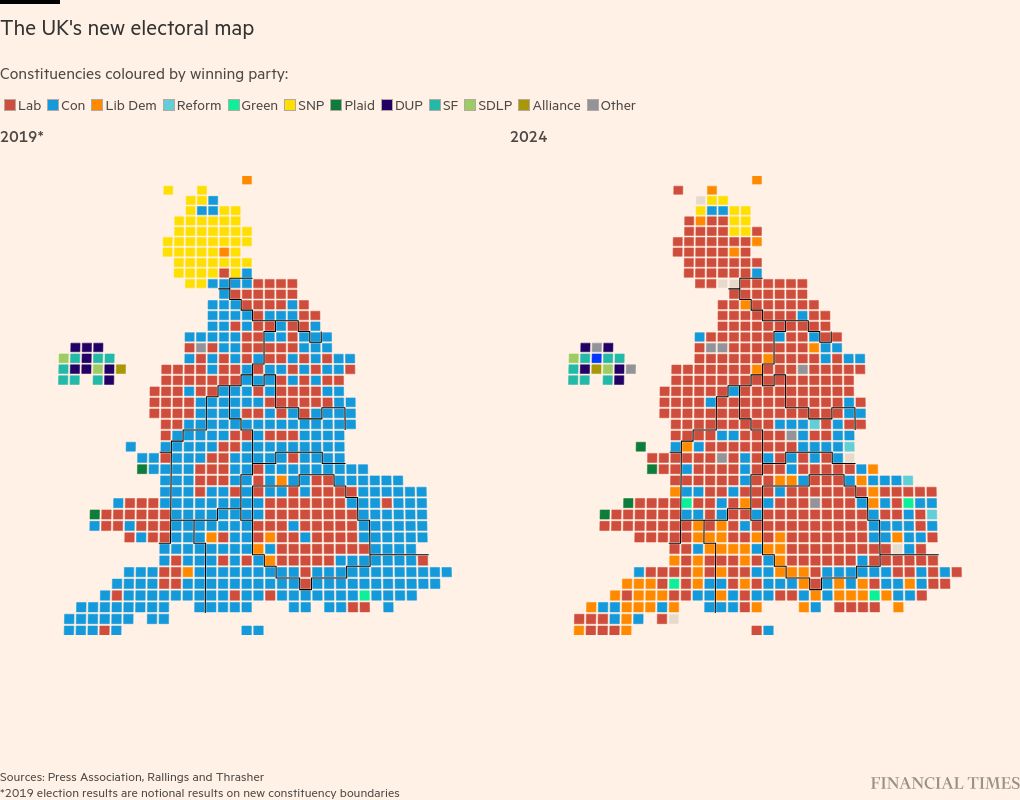
Just five years after the Conservatives swept Labour aside in its traditional heartlands on a mandate to “get Brexit done”, the party has suffered a catastrophic defeat, losing huge swaths of voters to Reform UK as well as Labour and the Liberal Democrats.
Tory support collapsed to 120 seats — the worst result since the party’s inception in 1834.
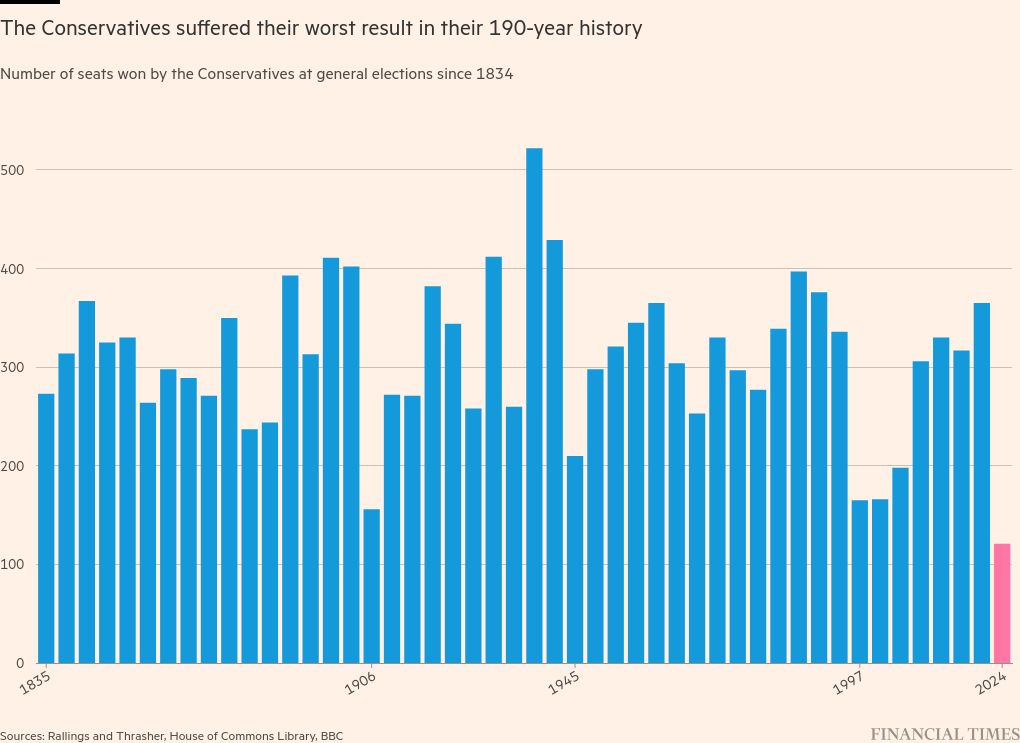
Constituencies that had been loyal to the Tories for decades have fallen, giving Labour its second largest majority of the postwar era.
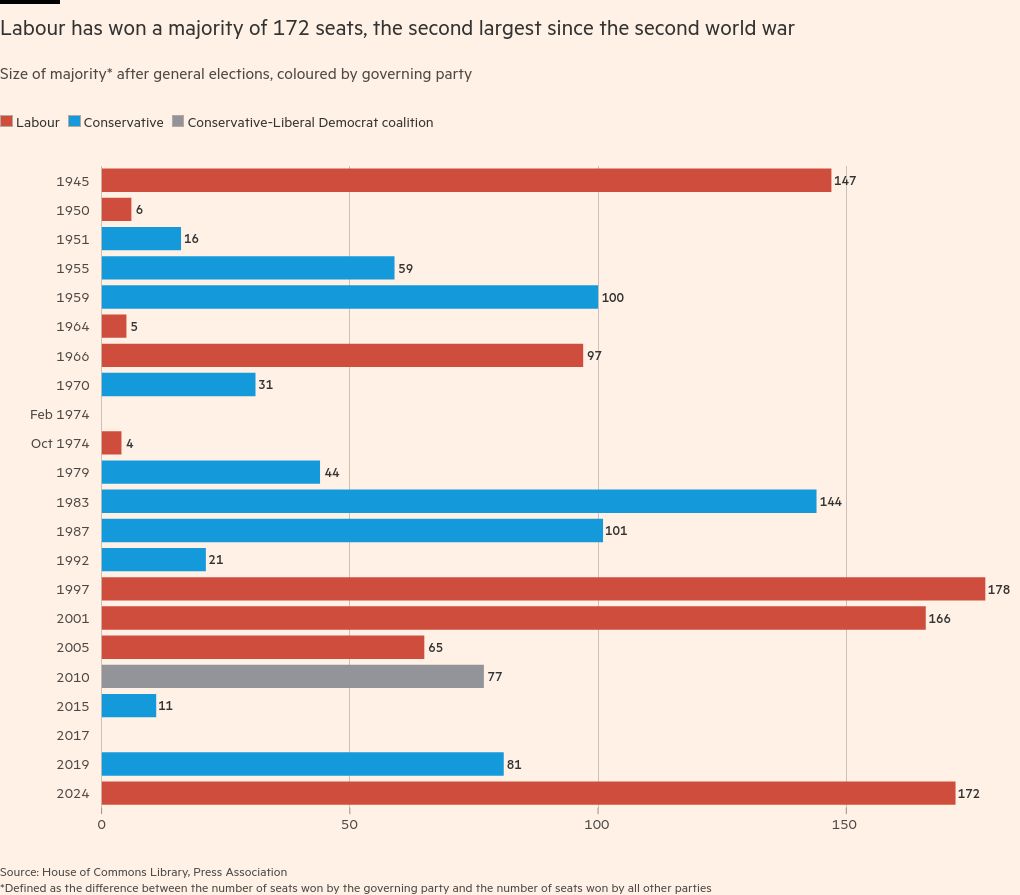
Labour’s share of the national vote increased only slightly to 33.8 per cent — 1.7 points higher than at the last election, but 6.2 points below the party’s performance in 2017.
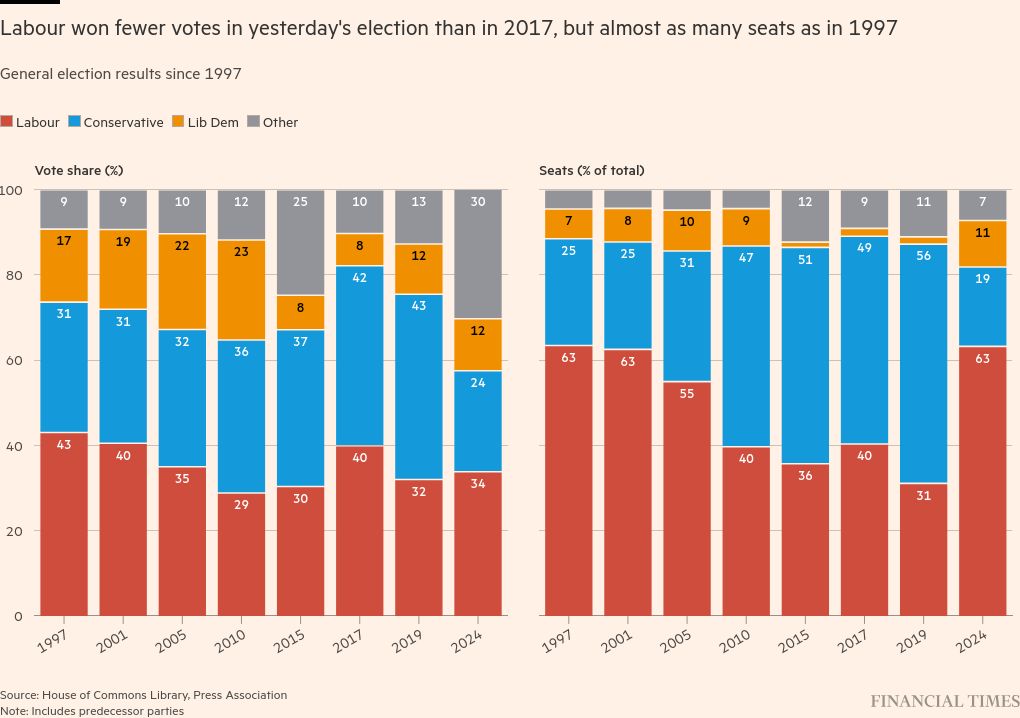
How Labour won
Unlike in some previous elections, Labour’s vote was spread efficiently across the country. Instead of stacking up votes in their safe seats, it won support in key marginals at the expense of both the Conservatives and the Scottish National party.
Labour regained dozens of seats from the Tories in the so-called red wall spread across the north of England and the midlands.
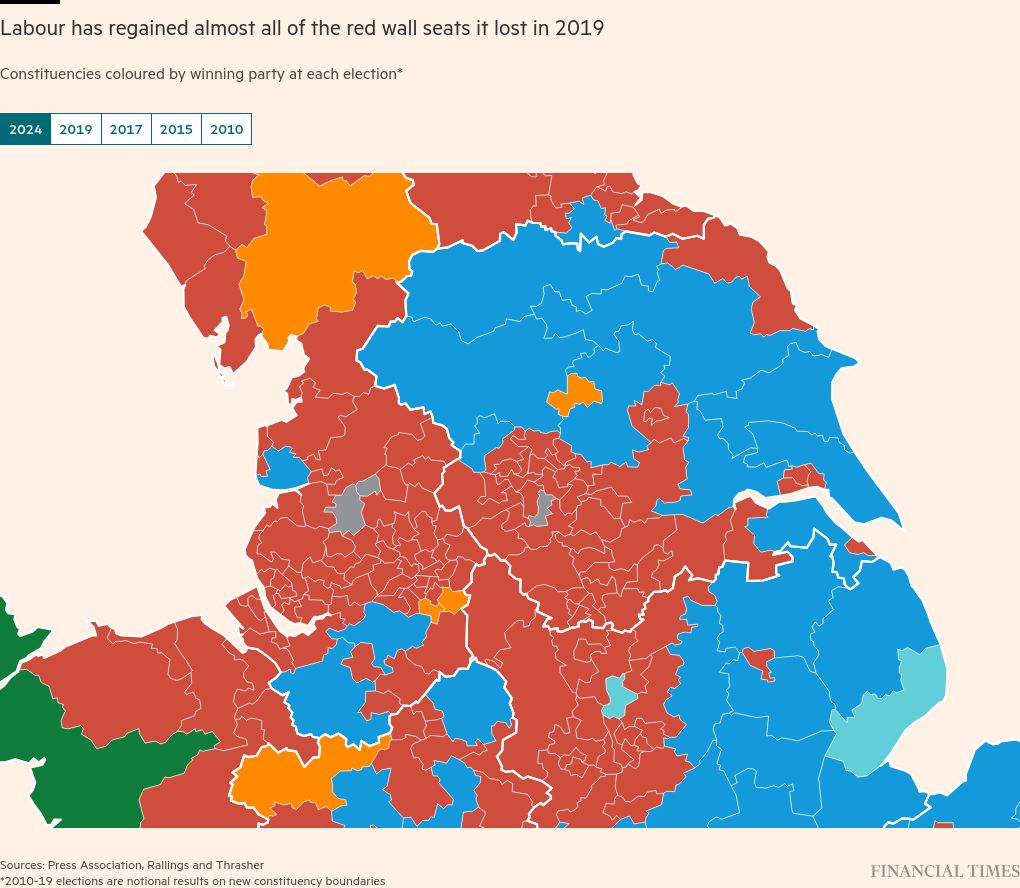
In Scotland, Labour increased its seat count from just one at the last election to 37, flipping dozens of constituencies across the central belt. The collapse in support for the SNP follows a number of scandals, ending the nationalist party’s decade-long dominance of politics north of the border.
After the surprise resignation of leader Nicola Sturgeon in 2023 and embezzlement charges against her husband, successor Humza Yousaf was ousted in May amid rows over the SNP’s governing partnership with the Scottish Greens.

But Labour did lose support in some of its safest seats. At the last election in 2019, the party won 121 seats with more than 50 per cent of the vote, compared with just 70 this time.
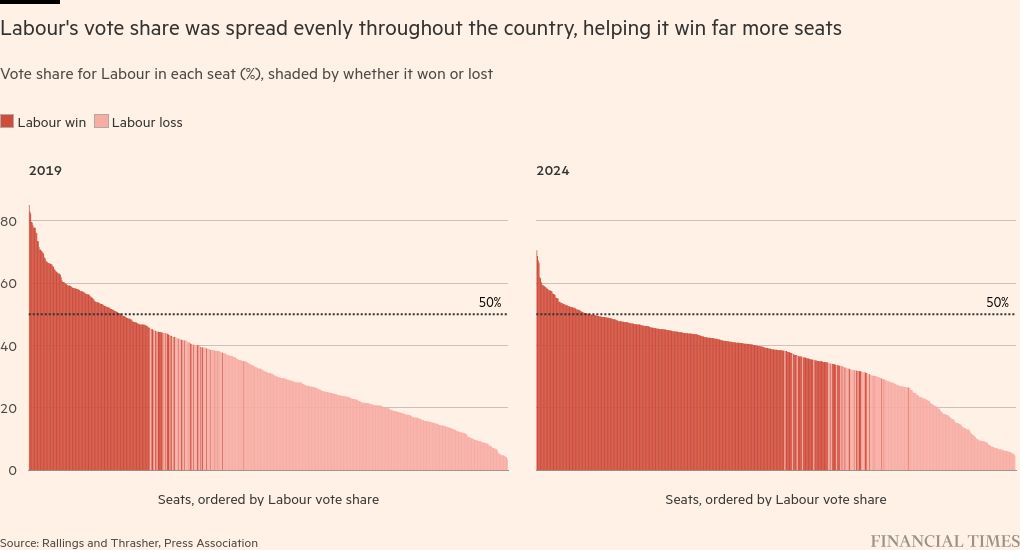
In the 63 safest Labour seats heading into the election, the party’s average vote share decreased from 67 per cent to 50 per cent.
But the decline in support in these areas translated into only a handful of seats changing hands. Using new constituency boundaries, Labour lost seven seats in total, when comparing with the 2019 election.
Bristol Central was lost to the Green party, and former Labour leader Jeremy Corbyn held on to his seat in Islington North after running as an independent.
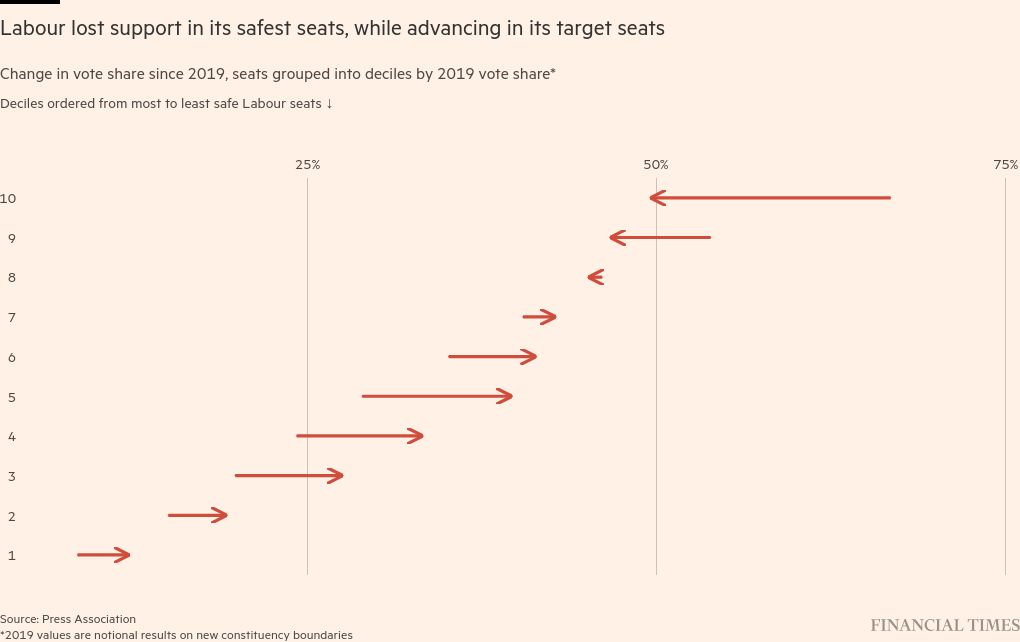
Anger over Labour’s response to the war in Gaza also dented support for the party in a number of constituencies with large Muslim populations.
Four seats were lost to independents in Blackburn, Leicester South, Dewsbury & Batley and Birmingham Perry Barr, with voters accusing the Labour of delaying demands for a ceasefire and not taking a strong enough line in support of Palestinians. Wes Streeting, shadow health secretary, hung on by a whisker against a similar challenge.
The Labour casualties included Jonathan Ashworth, senior shadow minister, who lost the former Labour stronghold of Leicester South by less than a thousand votes.
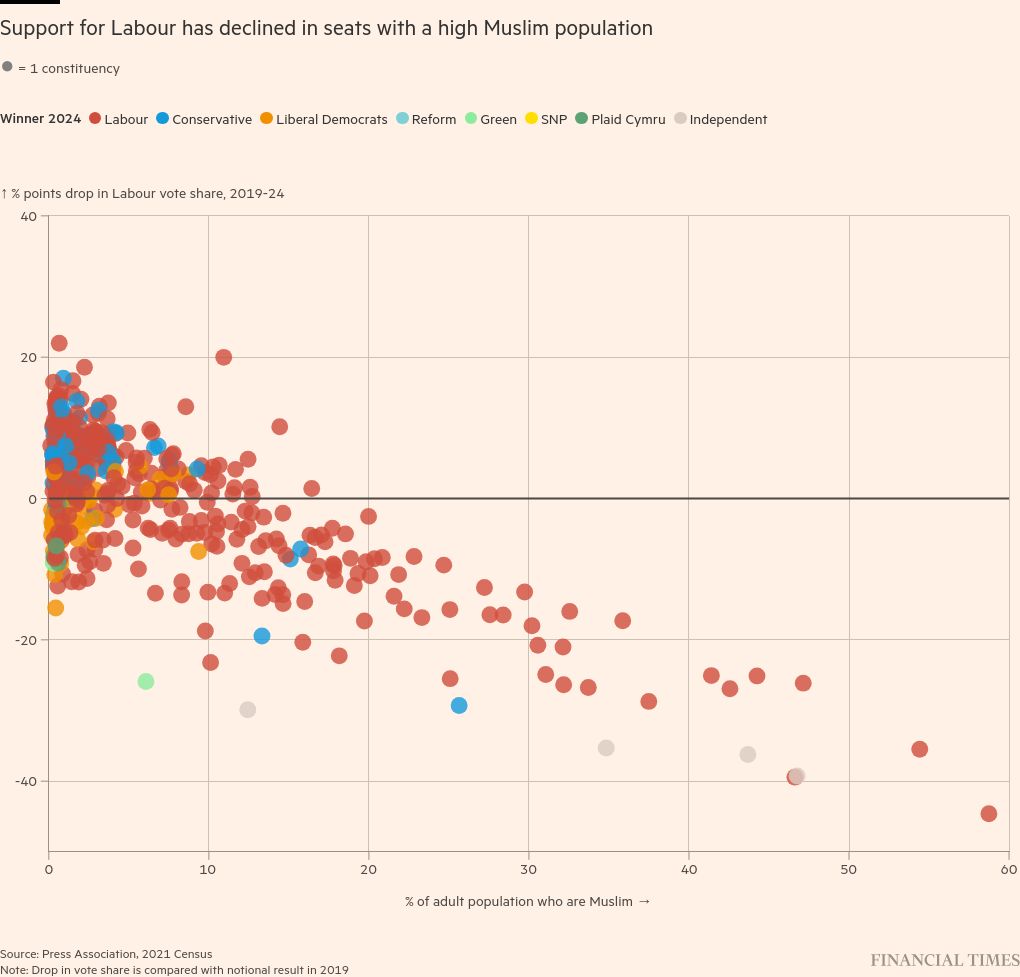
How the Tories lost
The Conservatives saw their vote share almost halve to 23.7 per cent, down from 43.6 per cent at the last election.
Many of the older and Brexit-supporting voters that propelled Boris Johnson to victory in 2019 switched allegiances to Nigel Farage’s Reform party, who surged to about 14 per cent of the national vote.
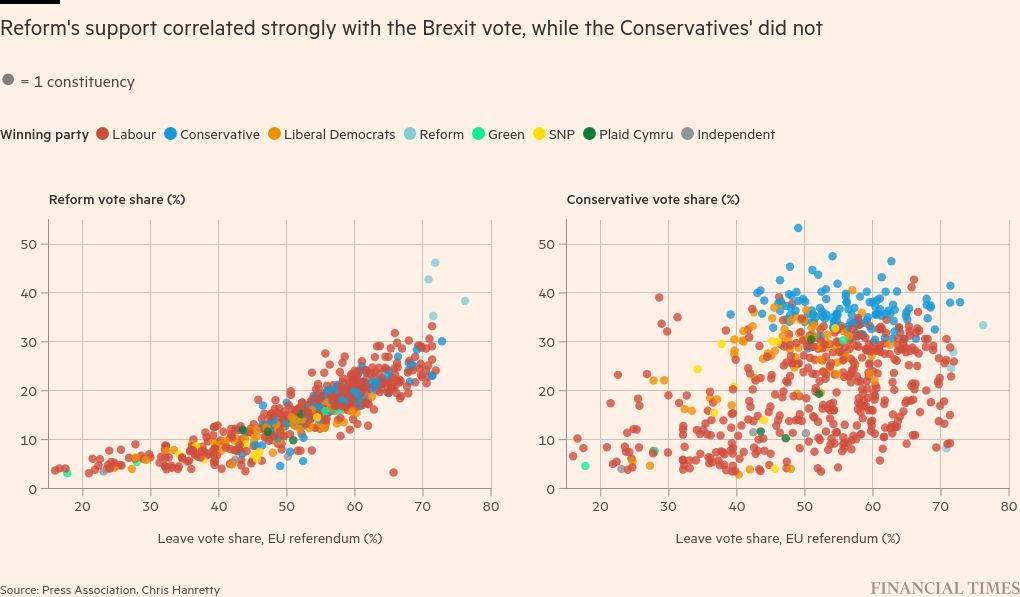
Farage was elected to parliament for the first time in Clacton, a constituency with one of the oldest and most pro-Brexit populations in the country, as the Conservative vote share there decreased from 72 to 28 per cent.
The same story was repeated elsewhere along England’s east coast, with Reform picking up Boston and Skegness, and Great Yarmouth. The party also triumphed in Ashfield, where former Tory deputy chair Lee Anderson held on to his seat following his defection to Farage’s party in March.
Reform finished second in a further 98 seats, 89 of which were won by Labour and 10 by the Conservatives.
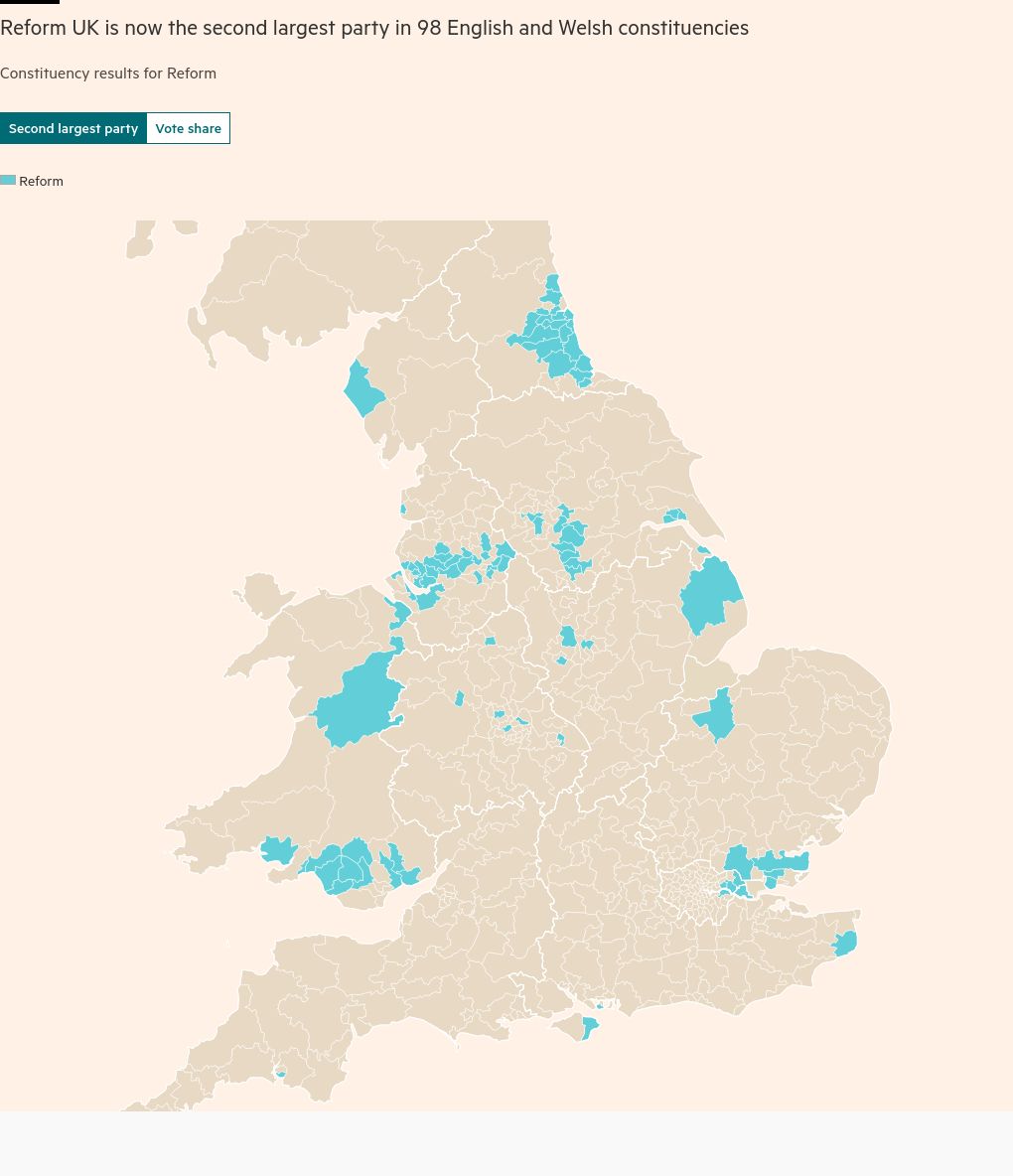
In many more seats, the splitting of the right’s vote enabled Labour to slide into first place. In the Kent seat of Sittingbourne and Sheppey, Labour’s vote share only increased by 8 percentage points to 29.1 per cent, but it was enough to beat the Conservatives and Reform on 28.2 and 25.6 respectively.
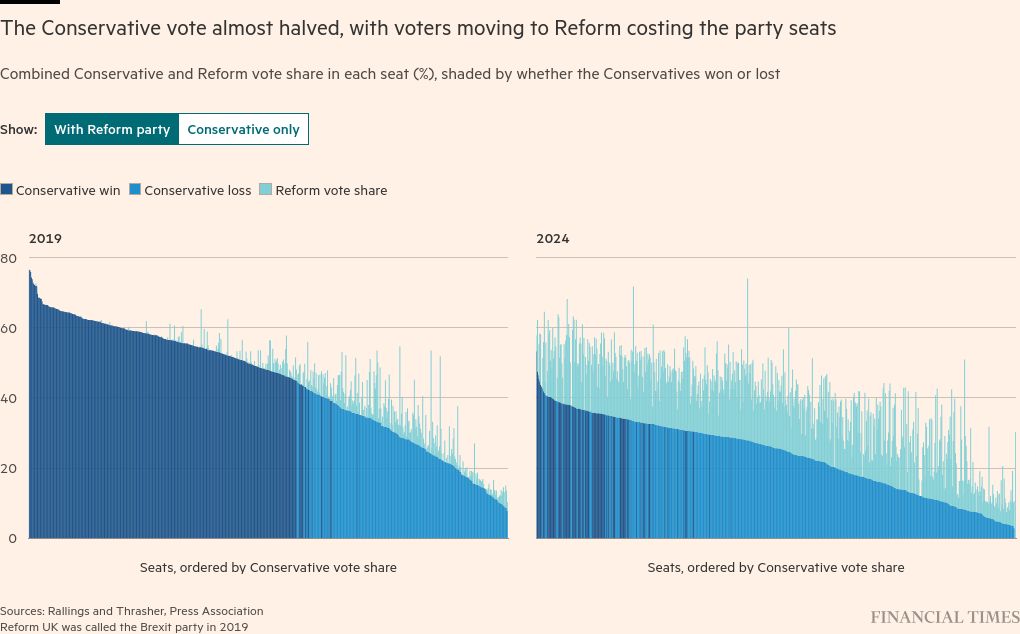
The Tory collapse also benefited the Liberal Democrats, who won 71 seats in their best result since 1923. The majority of these were along the A30 trunk road connecting London to Land’s End, including Winchester, Yeovil and St Ives.
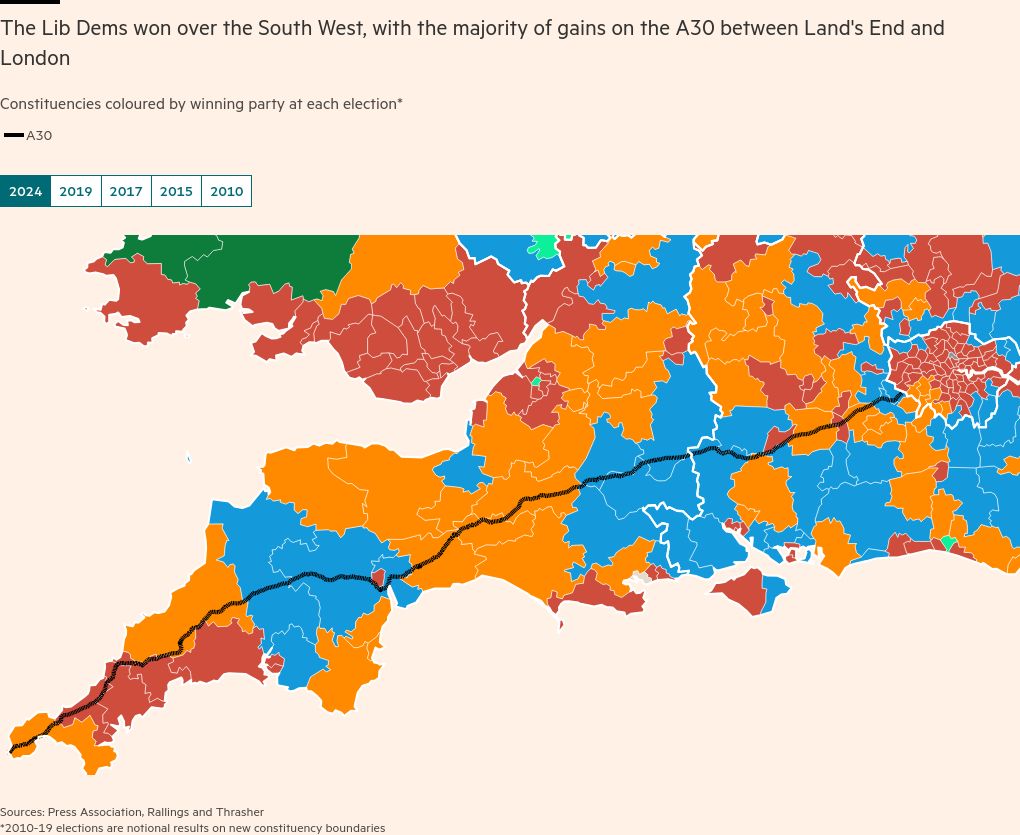
While Labour and the Lib Dems did not enter any formal electoral pact to avoid challenging each other in close contests, differing party strategies meant their paths rarely crossed.
Tactical voting was evident in dozens of Lib Dem target seats, where Labour-inclined voters backed the party to oust the Tory incumbent. In seats such as Newton Abbott, Labour lost 2.9 per cent vote share, enabling the Lib Dems to secure a narrow majority of 4.7 per cent.
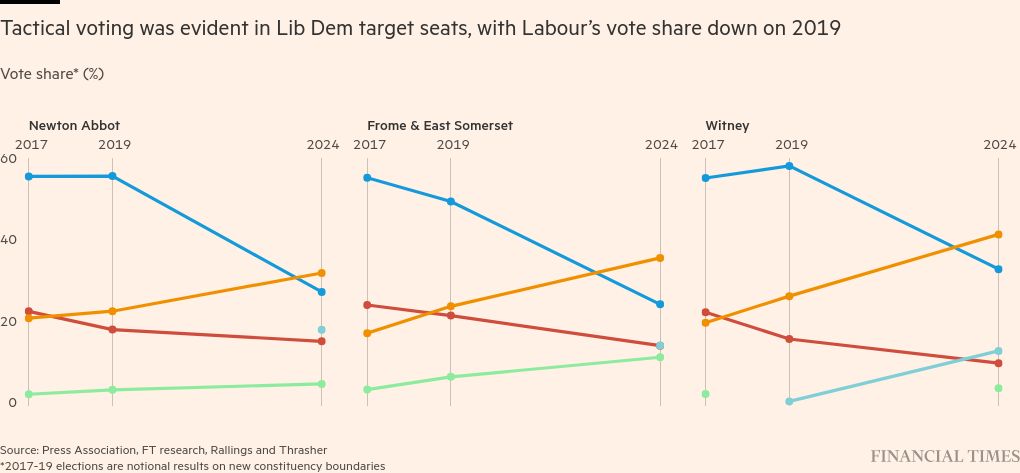
In the prosperous south east of England the Conservatives’ decades-long dominance across the so-called blue wall came to an end.
Senior Tory ministers, including Gillian Keegan and Penny Mordaunt, have lost the previously safe seats of Chichester and Portsmouth North.
In Godalming and Ash, the former chancellor Jeremy Hunt narrowly scraped a victory but suffered a 10 per cent loss in vote share.
